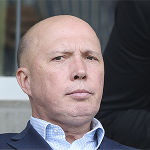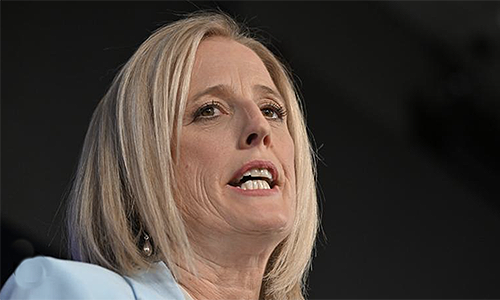
by GRAHAM YOUNG – ONE step forward and two steps back is the best summary of Australia’s results in the latest Programme for International Student Assessment (PISA).
The step forward was that we actually moved forward one place in the world—from 11th to 10th—with the backward steps being a continued deterioration in our results.
- A 13-year-old student in Singapore is performing as well as a 17-year-old in Australia.
- If our students were swimmers many of them would be drowning.
- Parents are trying to be best friends with their children, so the teacher becomes the enemy of both.
So, we’re not quite as good as we were, but we pulled ahead of most of the others, and 10th is not too bad. Should we be worried?
Yes, yes, and yes.
There is a relationship between education and national wealth; between education, personal standing and satisfaction with life; and between education and how well a society works.
WELFARE
In other words, education is important to physical, social, emotional and community welfare.
And that’s not just hyperbole. I ran some regression analyses, and the time spent in school is a major factor behind 71 per cent of the relative productivity of countries, 54 per cent of their happiness and a whopping 95 per cent of how democratic they are.
(The last figure makes me wonder whether the deterioration we are seeing in the standard of democracy is related in some way to the deterioration in the standard of education.)
And performance ought to matter just for its own sake. It does when it comes to sport. Remember the 1976 Olympic Games in Montreal where we failed to win a single gold medal?
The country went into virtual mourning which was only relieved when our athletic prowess was regenerated by the creation of the Australian Institute of Sport.
The difference between Australian kids and the top performers in Singapore is so great, they might as well not be in the same pool.
For maths it is four years, and for reading two years, and for science, three. That means a 13-year-old in Singapore is performing as well as a 17-year-old in Australia.
If our students were swimmers many of them would be drowning.
For example, just 48 per cent met the proficiency standards for mathematics, and 28 per cent scored the lowest proficiency.
And standards in Australia have been falling for as long as they’ve had PISA, while in Singapore there has been a significant improvement since they joined in 2009 – even then, they were the top-ranked country.
VILLAIN
In fact, standards have been falling in Australia since their peak in the 1970s.
What is the problem? Well, as they say in the social science classics, it’s multifactorial. And that means while there are lots of culprits, and possible culprits, it’s hard to say who is the prime villain.
One is teaching methods, particularly in reading, where education departments have taught student teachers “whole word” methods rather than phonics, even though the weight of academic studies supports phonics.
Perhaps upper socio-economics (SES) kids aren’t as affected, because they have parents who can help out, but what about the lower SES kids?
No wonder the gap in some subject areas between the upper and lower levels is up to five years!
So the teaching faculties are part of the problem.
Then there are the people who design the curriculums. A recent study by Learning First found that: “The Australian science curriculum in the first nine years of schooling:-
- Contains about half the science content of the average of other curriculums.
- Lacks breadth of learning: it covers 44 science topics compared to an average of 74 topics in other systems.
- Lacks depth of learning: just five science topics are covered in depth compared to an average of 22 topics covered in depth in other systems.
- That’s just the start of it. The National Curriculum also mandates that sustainability, Indigenous and Asian themes be taught across all subject areas.
So you might have a young poorly trained English teacher, struggling to cope with teaching Jane Austen and wondering how they are going to slip climate change into the conversation, an area about which they know even less.
For classroom teachers, discipline is also a big problem.
This is the era of rights-proliferation, without any corresponding growth in responsibilities.
You can’t discipline children as you used to, and many of the children have behavioural issues, as we’ve seen an explosion of ADHD and autism.
Teachers might be able to cope if parents were their allies, but too often the parents are trying to be best friends with their children so the teacher becomes the enemy of both.
This is accentuated by a reliance on teaching styles that emphasise child-directed learning, rather than the old-fashioned, but effective, direct instruction. Under the first approach, the teacher is supposed to guide, rather than teach, and allow the child to discover things for themselves.
I’m all for Socratic thinking, but you need a developed thinking apparatus before you can do it.
Direct instruction assumes that the child needs to be taught and shown, and then allowed to practice, the work checked, then rinse and repeat until the skill is mastered.
CLASS SIZE
Class sizes are also a part of the problem. And I’m not going where you might think. Research shows that the greatest impact on students is teacher quality, not class size. Smaller classes dictate that you need more teachers, but the more teachers you have, the lower the average ability.
Larger classes mean fewer teachers, higher productivity, and an opportunity to budget for better teacher salaries, thus conferring higher status on teachers.
This also requires better classroom behaviour, and doesn’t suit child-directed learning, requiring a different teaching style, and thus producing a virtuous feedback cycle of better teaching and methods.
Children of migrants for whom English is a second language actually perform better in the tests on average than children born here. This might seem explicable in maths and science where the language is the most international, but it isn’t intuitive when it comes to English.
The multi-factors here comprise how second language teaching uses phonics/explicit teaching methods; and the family and cultural factors that drive a family to leave one country and come to another to advance themselves.
Asian cultures prize learning, as witnessed by the top performers in PISA all being Asian—Singapore, Macau, Chinese Taipei, Hong Kong, Japan and Korea – and they take that part of their culture with them when they migrate.
A last factor is surely the ownership and control of schools.
American Thomas Sowell has demonstrated the extraordinary results that charter schools have achieved in the United States elevating the results of poor black students to being some of the best in the country.
In Australia, it is the private schools that do best in PISA. Some of this is no doubt due to private schools being drawn from the higher SES cohort that outperforms wherever they are.
However, there are a lot of lower SES students in the cheaper fee-paying private schools.
I went to such a school, and my recollection is that of the six students who received the highest ranking in our last year only one came from a privileged family, one was a migrant, and the other four from very modest backgrounds.
SMARTPHONES
Social psychologist Jonathan Haidt and lawyer Greg Lukianoff trace the rise in social contagions, like self-harm and gender confusion, to the arrival of the smartphone around 2009.
It’s a plausible thesis, although PISA decline started well before the smartphone, and has eased off lately, even though the phones are now ubiquitous.
Another factor that might be negative for children is the spread of quasi-compulsory kindergarten and preschool. This trend took off in Australia around 2010.
There is plenty of research that suggests a free-range childhood, and primary care by the parents up to around age six is the best. The sort of care those outperformers from the 1970s received.
Indeed, the world leader in education results, Singapore, doesn’t start formal education until 7 years of age.
It requires change and courage.
The changes are that we need to value overperformance in the classroom as we value it on the sports field.
Chuck the postmodern notion that marks don’t matter, and children are fragile, and unleash a bit of old-fashioned pride and competition.
Declutter the curriculum, make it demanding, give it breadth, and also depth, and cut out the social indoctrination.
Stop measuring quality on inputs (money) and start measuring on outputs (marks).
Recruit great teachers at better pay and increase class sizes as appropriate. Discipline, and if necessary isolate, disruptive children and stare their enabler parents down.
State governments need to refuse to take student teachers from tertiary faculties that won’t train them in effective teaching methods.
Principals need to be given control to hire and fire in their schools, as well as a say in financial priorities – this can be done in the public system, and by facilitating more private schools.
Reform funding so that it follows the child, and if a child has special needs because of disability, ensure the funding reflects that.
Ban phones at school, and limit use at home. Roll back the encroachment of childcare, kindy, and pre-school on childhood.
And courage? That’s for the politicians who would need to step up against teachers’ unions and all those invested in maintaining the inertia of the current malformed system, including parents who delegate parenting to teachers.
There is no need to stagnate. We can continuously improve. Singapore certainly has.
Joining the PISA system in 2009, it started out as the world leader and over the past decade has improved by roughly 20 points in each category – the equivalent of a year in schooling.
It’s as though they set one Olympic record, and then repeated the feat at each Olympics thereafter.
We could do worse than take a trip up there, and ask them how it is done.
It wouldn’t hurt us as another small country in a potentially hostile part of the world that values its quality of life, state of mind and security as one of those rare democracies.
Education isn’t everything, but it’s behind just about everything.PC












